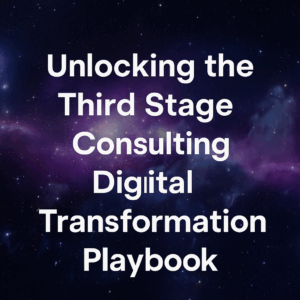Enterprise Resource Planning (ERP) implementations, particularly with systems like SAP S/4HANA, are notorious for ballooning budgets and slipping timelines. Yet, these projects should not be synonymous with wasted resources. Instead, organizations must shift their focus to creating measurable value and ensuring a high return on investment (ROI). This article explores how to transform your S/4HANA implementation from a financial burden into a value-driving success.
Table of Contents
ToggleThe Challenge: Why ERP Projects Go Off the Rails
Research shows that over 80% of ERP and digital transformation projects fail to meet expectations. The reasons are often the same: cost overruns, technical complexities, organizational resistance, and an excessive focus on project timelines and budgets. While these factors are important, they often detract from the bigger picture—delivering business value.
Organizations frequently become fixated on minimizing costs and controlling timelines. This narrow focus can lead to underinvestment in critical areas that drive ROI, such as functionality that delivers real business benefits. The result? ERP projects that fall short of their transformative potential.
Shifting the Mindset: From Cost Control to Value Creation
To ensure S/4HANA implementations deliver ROI, organizations must start by reframing their approach. The focus should not solely be on avoiding failure but on actively creating value. Here are three key strategies to achieve this:
1. Rationalize Implementation Costs
- Conduct a detailed business case analysis to identify which functionalities and modules will deliver the most value.
- Avoid unnecessary add-ons and features driven by sales pitches rather than business needs.
- Establish a realistic budget that accounts for both the known and potential costs of the implementation.
By aligning spending with business priorities, you’ll avoid overpaying for features that don’t contribute to your organization’s goals.
2. Mitigate Operational Disruptions Post-Go-Live
- The period immediately following go-live is critical. Any disruptions—such as an inability to ship products or run payroll—can erode trust and financial stability.
- To minimize these risks, allocate resources to thorough testing, change management, and user training.
- Consider spending more upfront to ensure a smooth transition rather than cutting corners and facing costly issues later.
3. Focus on Long-Term Business Value
- Real value comes after the system is stabilized. Organizations often stop optimizing once they’ve gone live, leaving significant benefits untapped.
- Use the business case as a living document to track and measure benefits over time. Identify areas for improvement, such as minor reconfigurations, additional training, or resolving integration issues.
- Delay subsequent phases of the project to focus on fine-tuning the initial implementation. This not only maximizes ROI but also provides valuable lessons for future phases.
The ROI Equation: Balancing Cost, Risk, and Value
Achieving ROI in an S/4HANA implementation requires a delicate balance:
- Cost Control: While it’s essential to manage costs, overly aggressive cuts can increase risks and reduce long-term value.
- Risk Management: Quantify and plan for potential disruptions post-go-live. Spending more to mitigate these risks is often a worthwhile trade-off.
- Value Realization: Treat the go-live milestone as the beginning, not the end, of value creation. Commit to continuous improvement and optimization.
Conclusion: Transforming ERP Challenges into Opportunities With SAP S/4HANA
S/4HANA implementations are inherently complex, but with the right mindset and approach, they can become powerful drivers of business value. By prioritizing functionality that delivers ROI, managing post-go-live risks, and focusing on long-term benefits, organizations can turn potential money pits into strategic investments.
For more insights on making your S/4HANA implementation a success, download our comprehensive guide to S/4HANA projects. This resource offers practical, tech-agnostic advice to help you navigate the complexities of ERP transformations.
Your ERP project doesn’t have to be a cautionary tale. With a focus on value creation, it can be the cornerstone of your organization’s future success.

How Can We Help with your Business Transformation: people-first
At Third Stage Consulting, we are passionate about empowering organizations to successfully navigate the complexities of digital transformation. Whether you’re embarking on a new transformation journey or aiming to optimize your current processes, our expert team is committed to providing comprehensive support throughout every phase. From initial strategy development to execution and beyond, we work closely with you to ensure that your transformation goals are met efficiently and effectively.





